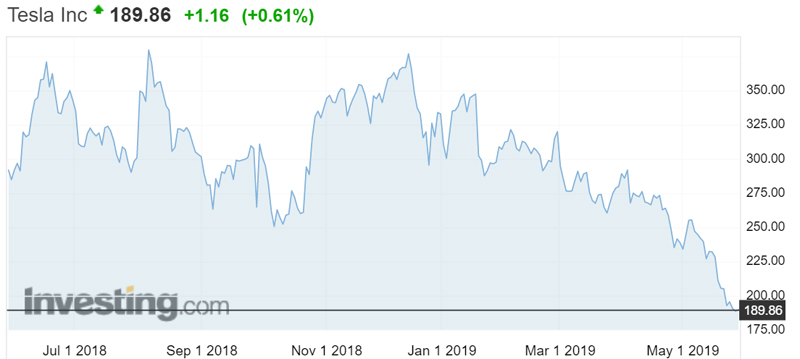The Secret Broker: What it really means to ‘go short’ and why you’re probably not ready for it

Need a stepladder? Picture: Getty Images
For most of us, we learn what it means to be “short” at school, when puberty kicks in and everyone shoots up in height. One poor kid is late to the party and to only his or her mother’s delight, doesn’t outgrow the uniform until after it’s no longer required.
In the world of brokers and speculators, “short” has a different meaning.
When you first find yourself grappling with different meanings to common words you have grown up with, it does take some mental adjusting before it becomes part of your broking swagger. When we all started out, Google had not been invented, so it was up to older brokers to explain old words with new meanings.
If your broker calls you and says he’s short, it doesn’t mean the guys in the office have to help him up to his chair and onto an extra big cushion every day. He’s telling you to expect a fall in the market and he has put his money where his mouth is.
The art of shorting in the stockmarket is something that is complex to set up and needs nerves of steel to complete. I have in the past and will always be in the future, in awe of the professionals who ‘short’ real shares for a living. The risks involved and patience needed is too much a strain on my mental wellbeing.
Scotland does not produce enough single malt whisky for me to deal with it calmly.
Sure, anyone can easily short financial derivatives like CFDs and Futures, but shorting individual company shares, with no put or call options available, requires you to be – let’s put it bluntly – packing the kind of equipment a bull elephant would brag about down at the watering hole.
Getting the picture?

Good, now we can talk about why you should never be caught short with nowhere to go.
First, you have to look at many companies in great detail to find an ideal candidate to short. You start by looking at share prices. The higher the share price, the greater the kill.
A share can only ever fall 100%, which means a shorter’s profit can never be higher than the funds received after borrowing and selling the borrowed shares.
Any share over $10 is a great start and anything below $1 is a waste of time.
So, from a list of companies trading at $10 or more, you want to discard any that are paying a good fully franked dividend, because dividends being paid out causes heartburn to a shorter. It means the company is making money.
Once you have sieved through this lot, you then want to look at the market valuations of the companies left.
The bigger the valuation, the easier is it to get set.
Next starts the task of reading annual reports and hours and hours of in-depth research to find the overvalued beast. Finding lots of intangible assets is akin to those awkward dreams that take some explaining in the morning when she notices you’re wearing different pants than those you went to bed in.
Lots of intangible assets and substantial debt is approaching waking orgasmic. And if there are no dividends paid, then the lust turns into love – true love.
Once you have your target in your sight, it’s time to go out and borrow – note, not buy – the shares you wish to short.
- Subscribe to our daily newsletter
- Join our small cap Facebook group
- Follow us on Facebook or Twitter
The lending out of stock may seem a strange phenomenon, but there is a sophisticated network set up and spreadsheets of borrowable shares are circulated daily to hedge funds and institutions.
When you borrow a share, the lender keeps all of the rights attached, including all dividends and their franking credits.
You can lock in an amount of shares and a time length of the borrow, for a fee. Once all the paperwork is completed, the shares are transferred to your account, to sell.
When the time is up to return the borrowed stock, you wade into the market and buy the shares back and return them to the lender. Hopefully at a lower price than what you originally sold them for.
A famous recent example has been Elon Musk’s “war” on short-sellers. At its peak in May last year, anyone who’d jumped on the wave of short-selling Tesla would have been stuck short of those shares for nearly a year before covering the position and buying them back for any sort of a profit.

So, a shorter’s centrefold stock is one that has:
- A high share price
- Major debt
- No dividends
- Good volume
- Stock to borrow
- Unlikely takeover target potential
- Arrogant management
A recent example of the right target in Australia is Glaucus Research shorting of aptly named Blue Sky.
Blue Sky reached the blue sky at $14 a share before the sky turned black and stormy and was eventually carried out to the morgue at 18c. A brilliant bit of awe shorting by Glaucus Research (2).
We call on $BLA Blue Sky to provide the same level of transparency as the asset managers to which it compares itself and provide a breakdown of fee earning and non-fee earning AUM by fund, complete with disclosures on realized and unrealized valuation and IRRs. #ASX
— GlaucusResearch (@GlaucusResearch) April 5, 2018
And Tesla shorters are back in the winner’s circle, having made US$1bn last month, though the profit and loss to a Tesla shorter can be upset by the odd tweet by Elon.
His US$420 tweet hurt them but with the shares currently trading at US$188 after their last capital raising, they are cashing in.
One shorter even hired a helicopter to fly over their factories to video the amount of new cars parked up and then tweeted it out. Elon has even publicly stated that short-selling should be illegal.
Next week, I will touch more on stock borrowing and how one of my borrows got the ATO to change the rules on franking credits.
Something that even Bill Shorten couldn’t manage to do.
The Secret Broker can be found on Twitter here @SecretBrokerAU. Feel free to contact him with your best stock tips and ideas.
UNLOCK INSIGHTS
Discover the untold stories of emerging ASX stocks.
Daily news and expert analysis, it's free to subscribe.
By proceeding, you confirm you understand that we handle personal information in accordance with our Privacy Policy.








